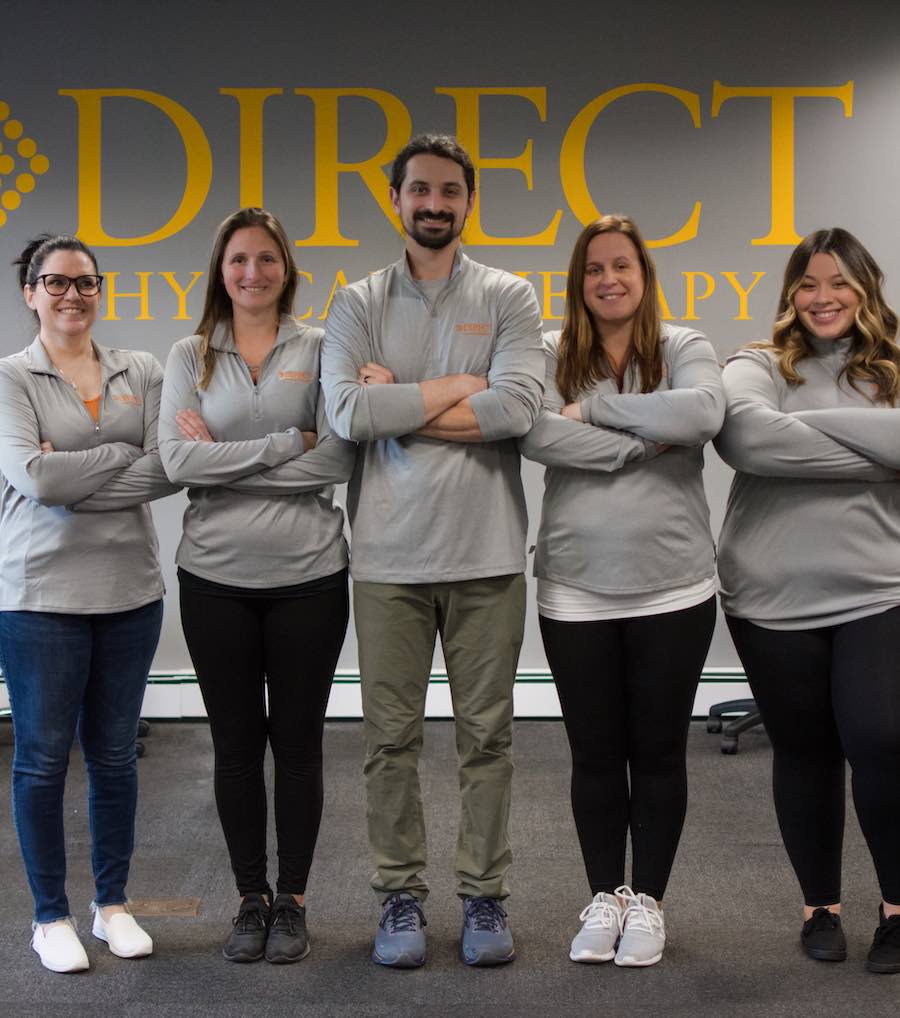At Direct Physical Therapy, we believe in empowering you with the knowledge and tools to manage your health. Physical therapy is a vital part of recovery and maintaining physical well-being, and starting with simple at-home exercises can be beneficial. This guide will introduce you to safe and effective exercises you can try at home before consulting a professional. Remember, your well-being is our top priority, so always listen to your body and seek professional help when necessary.
Understanding the Basics and Limitations of At-Home Physical Therapy
Physical therapy helps alleviate pain, improve mobility, and restore function. Before starting any at-home exercises, it’s crucial to prioritize safety. Pay attention to your body’s signals and avoid pushing through pain. These exercises are designed to be gentle and should not cause discomfort. If you experience significant pain, it’s a sign to stop and consult a professional.
Common At-Home Exercises for Different Conditions
Incorporating a mix of stretching and strengthening exercises into your daily routine can play a pivotal role in your physical therapy journey. Stretching helps maintain flexibility and range of motion, while strengthening exercises build muscle support around vulnerable areas, reducing the risk of injury. Simple routines, tailored to your needs, can address pain, stiffness, and weakness. These exercises not only prepare your body for more intensive physical therapy sessions but also enhance your overall mobility and resilience, making everyday activities easier and more comfortable.
Back Pain
Back pain is a common issue that can often be alleviated with gentle stretches and strengthening exercises:
- Cat-Cow Stretch: This yoga pose helps stretch and mobilize the spine. Start on your hands and knees, arch your back (cat), then dip it towards the floor (cow).
- Child’s Pose: This resting position stretches the lower back. Sit back on your heels with your arms extended forward on the floor.
- Pelvic Tilts: Lying on your back with knees bent, gently tilt your pelvis upwards and then back down, engaging your core muscles.
Neck Pain
Neck pain can be addressed with simple stretches and posture correction techniques:
- Neck Tilts: Slowly tilt your head towards each shoulder, holding the stretch for a few seconds.
- Shoulder Shrugs: Raise your shoulders towards your ears and release them down, helping to relieve tension.
- Chin Tucks: Gently tuck your chin towards your chest, creating a stretch along the back of your neck.
Knee Pain
Low-impact exercises can strengthen the muscles around the knee and alleviate pain:
- Leg Raises: Lying on your back, lift one leg at a time, keeping it straight and engaging your thigh muscles.
- Hamstring Stretches: Sit on the floor with one leg extended, reaching towards your toes to stretch the back of your thigh.
- Wall Sits: Lean against a wall and slide down into a sitting position, holding to strengthen your quadriceps.
Shoulder Pain
For shoulder pain, focus on range of motion exercises and gentle strengthening:
- Arm Circles: Extend your arms to the sides and make small circles to loosen the shoulder joints.
- Shoulder Rolls: Roll your shoulders forward and backward to release tension.
- Wall Push-Ups: Perform push-ups against a wall to gently strengthen your shoulders without putting too much strain on them.
Incorporating Tools and Equipment
Enhancing your at-home physical therapy routine with the right tools and equipment can significantly improve your results. Simple, accessible items like foam rollers, resistance bands, and exercise balls can add variety to your exercises and target different muscle groups. These tools not only help in strengthening and stretching but also in improving flexibility and reducing tension. Incorporating these aids into your routine can make your workouts more effective and enjoyable, paving the way for a smoother recovery journey.
- Foam Rollers: Foam rollers can be used to massage tight muscles and improve flexibility. Roll gently over sore areas to release tension.
- Resistance Bands: Resistance bands are excellent for strength training without heavy weights. Use them for exercises like bicep curls and leg presses.
- Exercise Balls: Exercise balls can be used for various exercises that engage multiple muscle groups, such as stability ball squats and planks.
Creating a Consistent Routine
Consistency is key to seeing improvement with at-home physical therapy exercises. Establishing a regular schedule and adhering to it can significantly enhance your progress. Choose a time each day that works best for you, and commit to performing your exercises during that period. Whether it’s early in the morning to start your day with energy or in the evening to wind down, consistency will help form a habit and make it easier to maintain your routine.
Keeping a journal of your exercises, progress, and any discomfort can be incredibly beneficial. Documenting your daily activities, noting which exercises you performed, how you felt before and after, and any pain or discomfort experienced can help you identify patterns and make necessary adjustments. This journal serves as a motivational tool, allowing you to see tangible evidence of your improvement over time.
Additionally, tracking your progress helps you stay accountable and dedicated to your recovery journey. Seeing small but steady progress can boost your morale and encourage you to continue your efforts, knowing that each step brings you closer to your goals. Set realistic milestones and celebrate each achievement, no matter how small, to maintain a positive outlook.
Incorporate reminders and set specific goals to keep yourself on track. Use alarms, calendar notifications, or enlist a family member or friend to remind you of your exercise schedule. Breaking down your long-term recovery goals into smaller, manageable tasks can make the process less daunting and more achievable.
By creating and maintaining a consistent routine, you’ll maximize the benefits of your at-home physical therapy exercises and enhance your journey to recovery.
Knowing When to Seek Professional Help
While at-home exercises can be beneficial, it’s essential to recognize when professional help is needed. If you experience persistent pain, increased discomfort, or new symptoms, it’s time to consult a physical therapist. Professional evaluation and personalized treatment plans can address your specific needs and ensure a safe and effective recovery journey.
At Direct Physical Therapy, we are committed to supporting your journey to recovery. Starting with at-home exercises can be a great first step, but remember, your safety and well-being are paramount. Listen to your body, stay consistent, and don’t hesitate to seek professional help when needed. We’re here to guide you every step of the way to a healthier, pain-free life.
Don’t let pain control your life. Contact Direct Physical Therapy Yonkers to learn more about our services and schedule your consultation. Your path to a happier, healthier life begins with a call. Let us be your partner in reclaiming the joy of movement and wellness.
This article is intended for informational purposes only and should not be considered as medical advice. The content provided is based on general knowledge. Individual health needs vary, and consulting with a qualified healthcare professional for personalized advice and treatment is crucial. Always seek the guidance of your healthcare provider for any questions or concerns regarding your health.











